Iron bacteria can be regarded as an exotic microbe. However, it is a fairly widespread issue in well water systems worldwide. If your home is serviced by a private well for water, then possibly you have noticed an orange or reddish-colored slime staining toilets, fixtures, or even well casings. Perhaps your water smells of a metallic odor, similar to odor of swamp, and that is indicative of a problem with iron bacteria.
Table of Contents
-
-
-
-
-
- 1. Introduction
- 2. Understanding Iron Bacteria
- 3. Risks and Consequences of Iron Bacteria
- 4. Why to Treat Iron Bacteria with Chlorine?
- 5. How Much Chlorine You Need
- 6. Step-by-Step Step-by-Step Procedure in Shock Chlorination
- 7. Long-term Maintenance Chlorination for Long-term Control
- 8. How to Use Granular Chlorine Effectively
- 9. Alternative/Additional Treatment Techniques
- 10. Frequent Asked Questions
- 11. Conclusion
-
-
-
-
1. Introduction
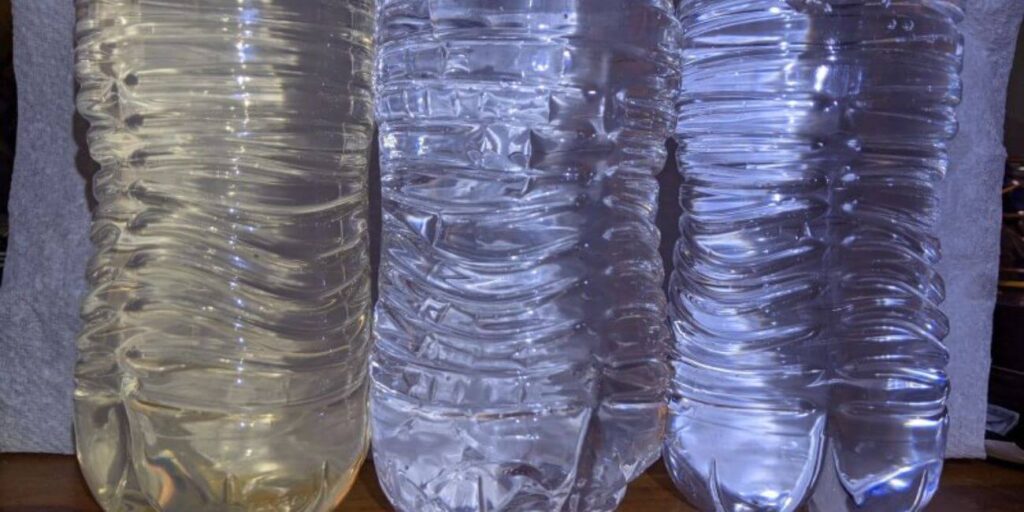
Iron bacteria will not cause direct health issues. But their presence can wreak havoc with pipes, produce odorous slime, and make pipe buildups occur. On of one of the best and least costly options for combating iron bacteria, however, is with the use of chlorine(i.e. granular chlorine, chlorine tablets and trichlor powder). In this article, a complete view will be taken at why and how much chlorine must be added in an effort to destroy iron bacteria in your well. Specific examination will be taken concerning shock chlorination and maintenance chlorination, a discussion about utilizing Granular Chlorine, and best practice for continuous maintenance of your well. After reading through this article, you will have a complete view of the actions that must be taken in an endeavor to rid your source of water of iron bacteria and maintain your well in an optimal state of performance.
2. Understanding Iron Bacteria
2.1 What Are Iron Bacteria?
Iron bacteria naturally occur in microorganisms that naturally inhabit the soil, shallow groundwater, and near-surface water. Unlike pathogenic bacteria, these microbes gain energy through oxidizing dissolved iron (occasionally, sometimes even manganese) in water. Wherever a source of oxygen is present, wherever a source of oxidation is present, these microbes metabolize and convert dissolved iron (ferrous iron) to ferric iron (solid “rust” form). It creates a gluey, rust-colored slime that accumulates in well casings, pipes, and household fixtures.
2.2 How Iron Bacteria Get into Well Systems
Iron bacteria enter a well system most frequently during drilling, when pumps are installed, or when maintenance work is performed, when tools or pipes contact soil or contaminated water. Poor construction, and utilizing water drawn from contaminated surface sources for driving wells, introduce iron bacteria, too. In a few cases, floodwaters full of these microorganisms can seep through poorly sealed wells.
2.3 Common Symptoms
The presence of iron bacteria tends to announce its presence in a variety of fashions:
- Stains Rusty or Orange: Stains in toilets, toilets, and bathtubs that won’t wash off.
- Slime Deposition: Slimy, jellylike sediment in toilet bowls, toilet tank, and in parts of wells.
- Stinky Smells: Stinky, swampy, sewage, and musty odors that sometimes have a similar odor to a foul odor of rotted vegetables.
- Discolored Water: Red, orange, and brownish colors in water that won’t decolor even when filtered through a filter.
Where iron bacteria are suspected, run a simple observation test, have a laboratory test your water, or have a licensed well contractor inspect your well for you.
3. Risks and Consequences of Iron Bacteria
3.1 Plumbing and Water Conduits
Iron bacteria can form thick rust-colored slime accumulations in pipes, well screens, and fixture plumbing. Over time, slime layers restrict water flow, reducing your well’s yield and lowering water pressure in your dwelling. This can become infuriating during times of high use, such as morning showers or runs of washing clothes.
3.2 Corrosion Possibility
Iron bacteria, in consuming dissolved iron and converting it to rust, have the capability of creating localized acid environments. With time, these micro-environments cause metal parts in well systems, pumps, and fixture plumbing to corrode. A rusted well case and/or pump can be a pricey restoration and/or replacement job.
3.3 Contamination
Iron bacteria can promote an ideal environment for additional microbe species including coliform and sulfur bacteria. Presence of iron bacteria doesn’t necessarily mean coliform or other pathogen-producing bacteria live in your water—but, it can increase the likelihood of such presence, creating a welcoming environment for additional life forms.
4. Why to Treat Iron Bacteria with Chlorine?
4.1 How it works
Disinfectant in water purification systems worldwide, chlorine inactivates and destroys bacteria through its capacity to penetrate bacterial cell walls and disfunction its metabolic processes.Applied at the proper concentration and with proper contact time, chlorine can destroy bacterial colonies in well water with ease.
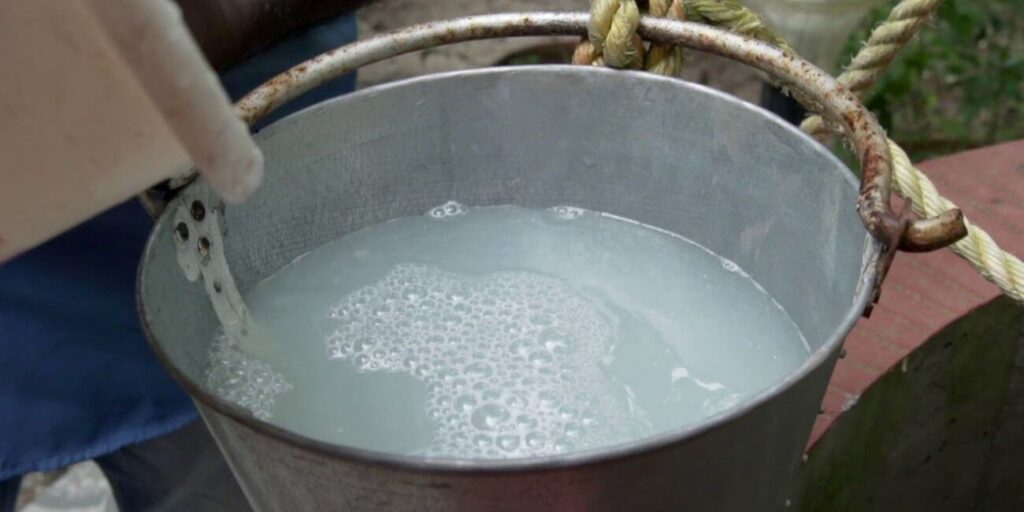
4.2 Varietes of Chlorine
There are three general categories of chlorine most commonly utilized for purification of water:
- Liquid Household Bleach (Sodium Hypochlorite): In many grocery stores, but sometimes with additives not safe for use in potable water.
- Pool Chlorine (10-12% Sodium Hypochlorite): Higher purity form used in pools, free of several additives in washing machine bleach
- Granular Chlorine (Calcium Hypochlorite): Granular form, sometimes NSF-certified, that dissolves in water to yield free chlorine. Granular Chlorine is convenient to store, meter, and transport, and is a favorite with homeowners and professionals alike.
4.3 Limitations of Chlorine & Need for Correct Dosage
The effectiveness of chlorine can be partially reduced when it comes in contact with iron, manganese, organic matter, or other water impurities, decreasing its effectiveness. That is, you will require a larger dose, and possibly several treatments, to kill iron bacteria outright. Iron bacteria have protective slime deposits, too, and then you will have to remove them mechanically, at least partially, in order for chlorine to work effectively.
5. How Much Chlorine You Need
5.1 Factors That Influence
- Well Depth & Water Volume: The deeper the well, or larger the holding tank, the larger will be your demand for chlorine.
- Level of Contamination: Where iron bacteria are high, for successful “shock” treatment, you will require additional concentrations of chlorine in your treatment.
- Water Chemistry: High concentrations of dissolved iron, manganese, and organic matter will burn through your chlorine, and larger dosages will then be in store.
- Temperature & Exposure Time: Water temperature and contact time between the chlorine and the bacteria both impact disinfection efficiency.
5.2 Shock Chlorination and Maintenance Chlorination
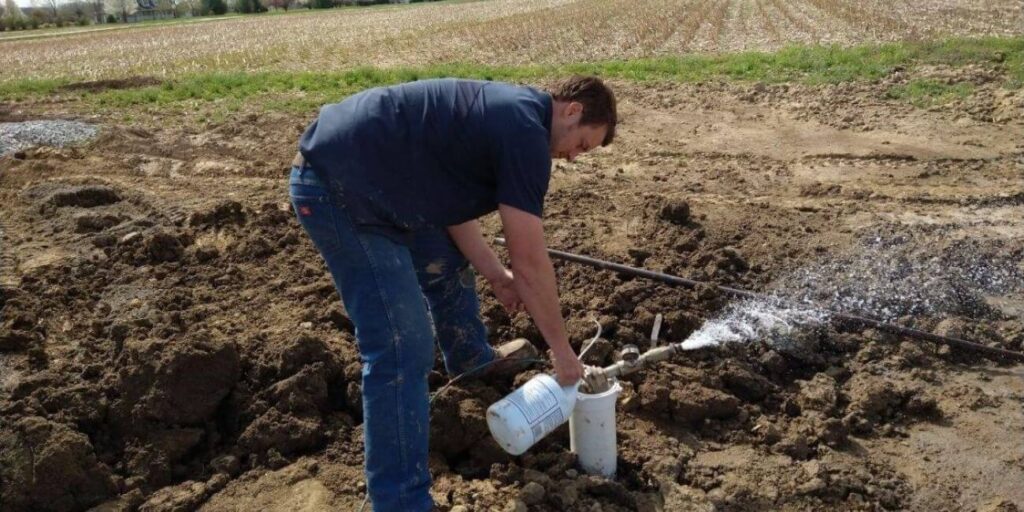
- Shock Chlorination: Applies concentrated chlorine (50 to 200 parts per million and more) to destroy bacteria in highly contaminated wells, and in new wells, for that matter. Usually, allow the water to sit with the strong hypochlorite for 12–24 hours and then flush out with water.
- Maintenance Chlorination: Consists of adding an adequate amount of chlorine to maintain a residual level of about 1–2 ppm regularly. This is for maintenance of a reduced bacterial re-growth after an initial “shock” treatment.
For iron bacteria, most professionals will use 50 to 100 ppm, and in extreme cases of overgrowth, 200 ppm. In case you’re employing Granular Chlorine for a shock treatment, use an approved dosage chart or seek a professional’s consultation.
5.3 Specifications and Charts
Trade standards will have a 1:1,000 (1 gallon 5.25% bleach per 1,000 gallons of water) proportion for use in cases of a shock chlorination, and roughly 50 ppm for iron bacteria or highly contaminated wells. In extreme cases, use 200 ppm. In the case of Granular Chlorine, use will depend in terms of measurement. Check your label of your product and confirm your product is NSF-tested for use in potable water.
6. Step-by-Step Step-by-Step Procedure in Shock Chlorination
Shock chlorination is one of most often recommended processes in iron bacteria elimination. What is below is a general guideline. Check your local legislation or a licensed contractor for specific guidance applicable locally in your region.
6.1 Prep
- Cleaning of Well & Tank: Start with a complete cleaning of as much debris or sediment as accessible in your well and any accompanying holding tank. Scrub interior walls and floors with a high-concentration mixture of chlorine for slime coatings dislodging.
- Shut Off Appliances: By pass or switch off water softeners, filters, reverse osmosis, and any other type of treatment device in order to spare them from getting ruined with high concentrations of chlorine.
- Ventilation & Caution: Apply protective gloves and goggles, and make sure proper ventilation in case work in an enclosed room. Chlorine vapors can cause damage.
6.2 Calculation of Correct Dosage
- Determine Your Water Volume: Calculate your well and your plumbing system’s overall gallons of water.
- Consult Charts or Labels: Set target guidance for attaining a target ppm according to recommended guidance. For mild cases of iron bacteria, target 100 ppm, and extreme infestations, 200 ppm.
- Try Granular Chlorine: Granular Chlorine can first be mixed in water, and then added to the well. Study and obey label instruction carefully, as labels will differ in terms of calcium hypochlorite content.
6.3 Mixing the Chlorine Solution
- Dissolve Granular Chlorine (If Necessary): In a new, unopened pail, mix Granular Chlorine and a small amount of water to make a solution and then run into well. Pre-mixing aids in mixture dispersal uniformly.
- Liquid Chlorine Additions, if Necessary: Many homeowners use a combination of both bleach and Granular Chlorine for an added boost of quick momentum but use with caution in individual phases in case chemicals react with one another.
6.4 Circulating, Resting, and Flushing
- Circulate the Chlorine: Connect a nearby spigot near a pressure tank to a hose in your well. Let water run, washing down case walls through and through.
- Rest Period: After attaining your desired level of system-chlorine, shut down your pump and have 12 to 24 resting hours for chlorinated water in your system.
- Flush Out: Turn on faucets beginning at one near well and moving outwards. Never flush into septic, and don’t drain high-chlorine water onto lawn or into surface water.
6.5 After-Treatment Sampling and Follow-Up
- Check for Chlorine Residual: With a reliable testing kit, monitor for chlorine ppm. In case of reading over 4 ppm, attempt a larger flush or wait for safe use.
- Consider Repeating: Repeated iron bacteria infestation can require repeat shock treatment when initial treatment did not thin slime layers effectively.
- Restore Equipment: After the level of chlorine reaches an acceptable level, your softeners, filters, and other treatment equipment can be restored and reused.
7. Long-term Maintenance Chlorination for Long-term Control
Iron bacteria can re-colonise following shock chlorination, in case environment continues to nurture bacterial development. That’s why well owners opt for a long-term maintenance practice.
7.1 With an Automatic Chlorinator
Automatic and semi-automatic chlorinators add low dosages of chlorine to your water line or well, offering a constant level of residual disinfectant. You can achieve this with:
- Liquid Bleach Pumps: By a metering pump, liquid chlorine is added to your water system.
- Chlorine Pellet Droppers: By dropping granular Chlorine pellets in your well, but exercise care when using it not to form a pool of pellets in your well.
7.2 Monitoring and Adjusting for Chlorine Residual
Monitoring your water’s level of chlorine regularly ensures your level is at target 1–2 ppm level. Adjust your feed rate according to your test, water consumption, and any detectable change in odor and taste.
7.3 Periodic Inspection and Cleaning
Maintenance chlorination works best when accompanied with routine observation of your well, pipes, and storage tank. Stopping iron bacteria re-entry, minor malfunctions can be repaired early, such as a loose seal or cover over your well.
8. How to Use Granular Chlorine Effectively
For homeowners seeking an effective iron bacteria removal method or iron bacteria control, Granular Chlorine is a convenient option. Following are key factors for effective use.
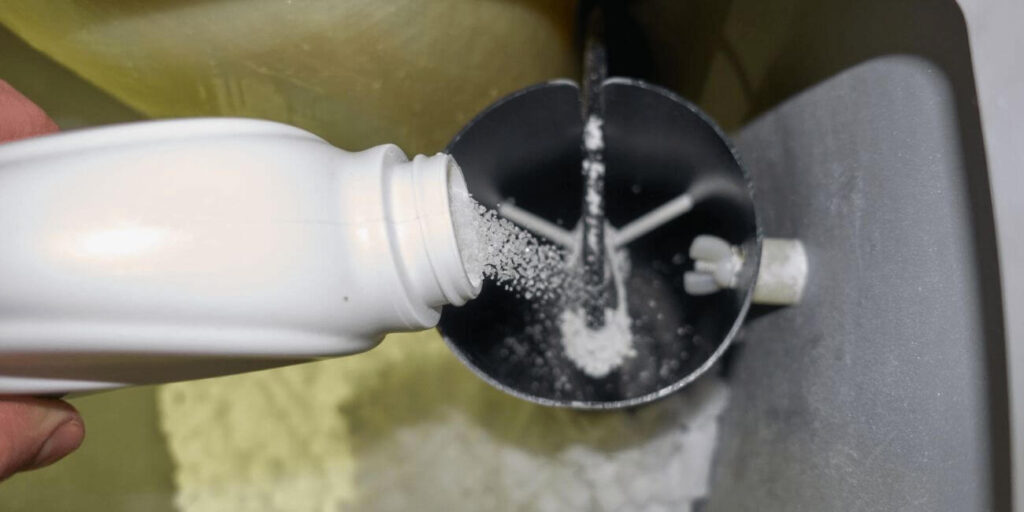
8.1 Uses and Merits of Granular Chlorine
- High Concentration of Chlorine: Granular Chlorine (calcium hypochlorite) tends to have 65–75% available chlorine, and its effectiveness is higher in most household bleach.
- Longer Shelf Life: Under proper storage (cool, dry location), Granular Chlorine lasts longer compared to liquid bleach.
- Easy Measurement & Transport: Smaller packages make Granular Chlorine ideal for professionals and well owners who require accurate dosages.
8.2 Safety Precautions
- Proper Dissolution: Sift Granular Chlorine in water first, then add it to a well, in order to prevent clumping and maldistribution.
- Ventilation: Gassing out occurs during mixing, so mix in a well-ventilated location.
- No Mixing with Other Chemicals: Never mix Granular Chlorine with acids, and don’t mix with any cleaners, in case of a chemical reaction with danger repercussions.
8.3 Common Mistakes to Avoid
- Not Sufficient Contact Time: Adding Granular Chlorine but not allowing a long enough contact period often yields incomplete disinfection.
- Incorrect Dosage: Under-dosing won’t kill iron bacteria, while over-dosing in excessive amounts could hinder disinfection effectiveness and even cause damage to gear.
- Skipping Pre-Cleaning Steps: Forgetting to go through the well cleaning stage can leave thick slime untouched, in which iron bacteria can evade the chlorine.
9. Alternative/Additional Treatment Techniques
Although chlorine is most often the default, alternative techniques, possibly alone, or in conjunction with chloride, can be utilized to tackle stubborn iron bacteria infestations.
(Source: How to Disinfect Your Well)
9.1 Physical Removal and Well Cleaning
Experts sometimes remove the pump and physically scour the well casing and interior parts to remove bulky biofilm coatings. After cleaning, a shock chlorination can be much more effective.
9.2 Surfactants, Acids, and Pasteurization
- Surfactants: Can break up bacterial slime but must often be accompanied with chloride, in case bacterial life forms will use surfactant for food.
- Acids: Break down iron deposits and destroy bacteria but must be handled professionally. Acid mixed with chloride can be highly perilous, and proper protocols apply, therefore.
- Pasteurization: Involves pumping steam or hot water into the well and heating it to about 140°F (60°C) for at least 30 minutes. Expensive but can work.
9.3 Combining Chlorination with Filtration
While successful chlorination, even with Filtered Pure, iron particulates and other impurities can still linger in existence. Adding a well-placed filter, such as a carbon filter or iron filter, will remove any lingering tastes, odors, or particulates. In a few cases, a multi-step system that treats both disinfection (with continuous chlorination) and filtering can have a one-two punch on iron bacteria.
10. Frequent Asked Questions
1). Can I use low concentrations of chlorine?
Yes. Organizations such as the U.S. EPA and the World Health Organization report 4 ppm of chlorine from granular chlorine, chlorine tablets, etc. in potable water is safe in most cases. Most city water networks have a less than 2 ppm residual.
2). Why will I need more than one treatment?
Iron bacteria is resistant to penetrate. In case the initial shock chlorination or chemical injection doesn’t disperse such layers at all, bacteria will re-colonize the system, and a repeat treatment will be warranted.
3). How often must I monitor for iron bacteria?
There’s no schedule for testing private wells for iron bacteria, since they’re not a health issue. Having a yearly examination for overall water quality, including a quick scan for slime or rust accumulates, is a wise precaution, nevertheless. In case of suspected problem, a water color, odor, or pressure change, test first.
11. Conclusion
Iron bacteria can be a problem, not a matter of life and death, but its ramifications for pipes, water purity, and household ease can be extreme. Remedying the problem starts with discovering iron bacteria presence—usually in terms of foul odor, discoloration, and slime accumulations—and then moving on with an effective disinfection strategy.
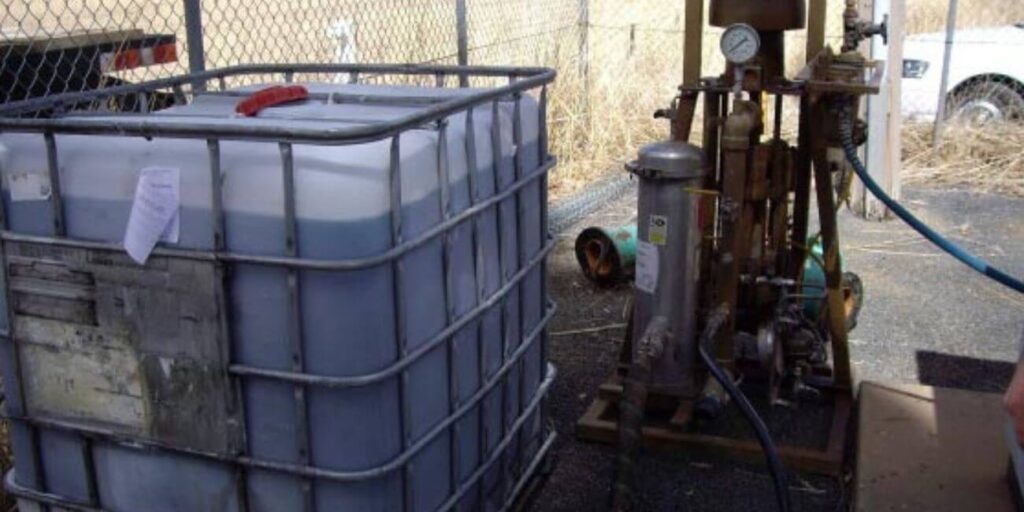
Chlorine products like granular chlorine, chlorine tablets, or chlorine powder, are a cheap, effective, and proven alternative, either through shock chlorination, continuous chlorination, or a combination of both. Most specifically, Granular Chlorine (calcium hypochlorite) can be an effective disinfecting tool in your bag of tricks. It’s high in usable chlorine, with a relatively long life, and easy to meter and apply. With best practice in mind—cleaning first, proper dosing, proper contact time, and thorough flushing—chlorination can effectively curtail, and even kill, iron bacteria.
And yet, remember, every well is a case unto itself. Well depth, water chemistry, contaminant loads, and system use profiles impact how much chlorine from granular chlorine, chlorine tablets, or trichlor powder will effectively destroy iron bacteria in a well. In case of persistent failure, or for homeowners uncomfortable with high-concentration disinfectants, don’t forget to contact a licensed well contractor or water treatment specialist. With proper maintenance, regular upkeep, and routine testing, iron bacteria can be kept at bay and freshwater, odorless, and slime-free for many years to come.
- Iron Bacteria Basics: Iron bacteria consume iron in solution in water and form rust-colored slime in wells and pipes.
- Role of Chlorine: Chlorine(like granular chlorine) kills iron bacteria through inhibition of its cell processes, but high iron loads and thick slime buildups can require successive treatments
- Granular Chlorine Uses: Granular chlorine (calcium hypochlorite) is strong, long-lasting, and easy to use for well maintenance.
- Shock and Maintenance: Shock chlorination works for immediate extreme Contamination, but ongoing low-chlorine dosing stops regrowth.
- Professional Solutions: Harassing and persistent cases will necessitate sophisticated treatments, cleaning out your well, or a professional service.
Following these steps, with proper use of granular chlorine and a scheduled maintenance routine, your well water can be cleaned to a cleaner, odorless state and iron bacteria can be kept under control, preventing future instances. In case of repetitive symptoms, buy an automatic chloriner system, or have a professional service it.
The secret is in being diligent: routine tests and proper sanitation can go a long, long distance in keeping safe and healthy water.
Keep in mind: Iron bacteria can be tenacious, but with careful planning, an effective dosing of chlorine, and ongoing observation, your well can be vanquished by these unwelcome guests—and have crystal-clear, refreshing-tasting water every day.
